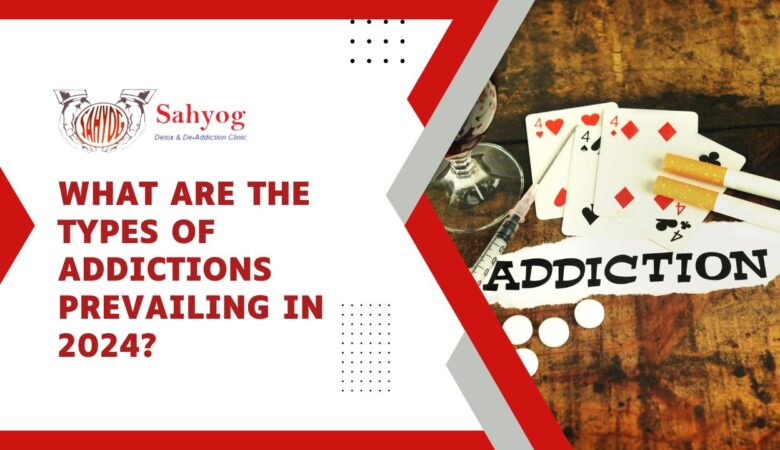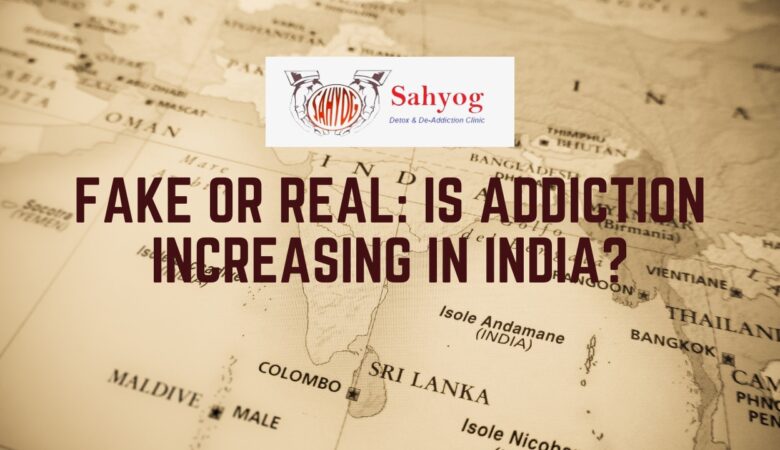What are the types of addictions prevailing in 2024?
Introduction to Addiction Are you constantly checking your phone, binge-eating late at night, or spending hours on end immersed in virtual worlds? Addiction comes in many forms and can sneak up on us when we least expect it. In today’s fast-paced world, new types of addictions are emerging alongside the more traditional ones. Let’s dive into the types of addictions prevailing in 2024 and explore how they impact our lives. Commonly Known Types of Addictions Addictions come in various forms, affecting individuals from all walks of life. One commonly known type is substance addiction, where people become dependent on drugs or alcohol to cope with their emotions or situations. This can lead to detrimental effects on their health and relationships. Another prevalent addiction is gambling, where individuals engage in excessive betting activities despite the negative consequences it may bring. Gambling addiction can spiral out of control quickly and result in financial ruin for many. Furthermore, behavioral addictions like internet and social media use have become increasingly common in today’s digital age. People find themselves compulsively checking their phones or spending hours online, impacting their productivity and overall well-being. It’s essential to recognize these common types of addictions and seek help when needed to overcome them before they take over one’s life completely. Emerging Types of Addictions In the fast-paced world of 2024, new types of addictions are on the rise, fueled by evolving technology and changing societal norms. One emerging addiction that is gaining attention is “nomophobia,” the fear of being without a mobile phone. People feel anxious when separated from their devices, constantly checking for notifications and feeling lost without them. Another concerning trend is “streaming addiction,” where individuals binge-watch content for hours on end, neglecting responsibilities and social interactions. The instant gratification provided by endless streaming platforms can lead to addictive behaviors and negative impacts on mental health. Moreover, “virtual reality addiction” is becoming more prevalent as VR technologies advance. Users immerse themselves in alternate realities for extended periods, blurring the lines between virtual and real life. As society continues to evolve in the digital age, it’s crucial to recognize these emerging addictions and address them proactively before they spiral out of control. Technology and Social Media Addiction In today’s digital age, technology and social media addiction have become increasingly prevalent. With the rise of smartphones and constant connectivity, it’s easy to get sucked into the virtual world. Scrolling through endless feeds, checking notifications every few minutes, and feeling anxious when away from your devices are all signs of this modern-day addiction. The instant gratification provided by likes, comments, and shares can create a dopamine loop that keeps you coming back for more. The fear of missing out (FOMO) also plays a significant role in perpetuating this addiction as we feel the need to constantly stay updated on what others are doing. Social media platforms are designed to be addictive with their infinite scrolling features and personalized content tailored to keep you engaged. It’s essential to recognize these patterns and take steps to limit screen time for a healthier balance in life. Setting boundaries, practicing mindfulness, engaging in real-life activities, and seeking professional help if needed can all contribute towards breaking free from this addictive cycle. Workaholism and Perfectionism Addiction In today’s fast-paced world, the pressure to excel can sometimes lead to workaholism and perfectionism addiction. Workaholics often find it hard to disconnect from work, constantly seeking validation through their professional achievements. On the other hand, perfectionists set unrealistically high standards for themselves, fearing failure and criticism. The constant need for productivity and flawless performance can take a toll on one’s mental and physical health. Burnout, anxiety, and even depression are common consequences of this addictive behavior. Despite the negative impact on well-being, individuals struggling with workaholism and perfectionism may find it challenging to seek help or change their habits. It is essential to strike a balance between work and personal life while recognizing that mistakes are a natural part of growth. Seeking support from loved ones or therapy can aid in breaking free from these harmful patterns of addiction. Additionally, setting realistic goals and learning to prioritize tasks can help in managing workloads effectively. It is also crucial to practice self-care and engage in activities that bring joy and relaxation. Overcoming workaholism and perfectionism addiction requires a willingness to let go of harmful behaviors and embrace a healthier mindset. It is important to remember that success does not equal self-worth, and it is okay to take breaks and make mistakes. Seeking help and making positive changes can lead to a more fulfilling and balanced life. Food and Diet Addiction In today’s fast-paced world, food and diet addiction have become prevalent issues affecting many individuals. It goes beyond merely enjoying a good meal to using food as a coping mechanism or seeking comfort in unhealthy eating habits. Food addiction can manifest in various ways, from binge-eating to obsessively tracking calories or following restrictive diets. The constant focus on food can lead to physical health problems like obesity and mental health challenges such as low self-esteem and guilt. On the other hand, diet addiction revolves around an extreme obsession with achieving a certain body image through strict dietary rules. This fixation on “clean” eating or reaching unattainable standards can take a toll on both physical and emotional well-being. Seeking professional help, building a healthy relationship with food, and addressing underlying emotional issues are crucial steps towards overcoming food and diet addiction. It’s essential to prioritize overall wellness rather than succumbing to harmful patterns of behavior related to eating habits. Shopping and Consumerism Addiction In today’s consumer-driven society, shopping addiction is on the rise. The constant need to buy and acquire material possessions can lead to financial strain and emotional distress. It goes beyond just enjoying retail therapy; it becomes a compulsive behavior that is hard to control. The thrill of making a purchase can provide temporary satisfaction, but it often masks deeper issues such as low self-esteem or



